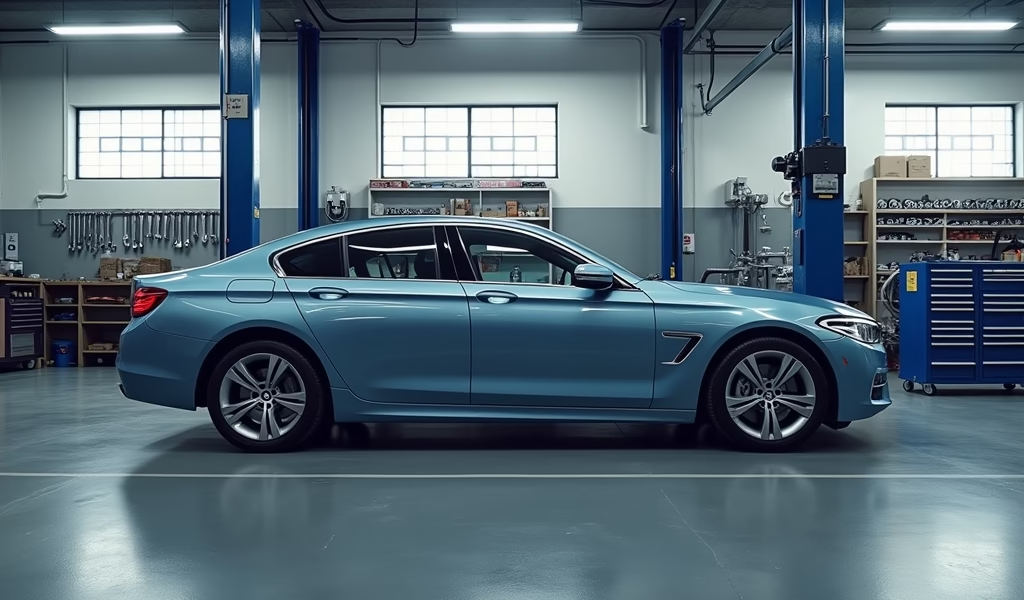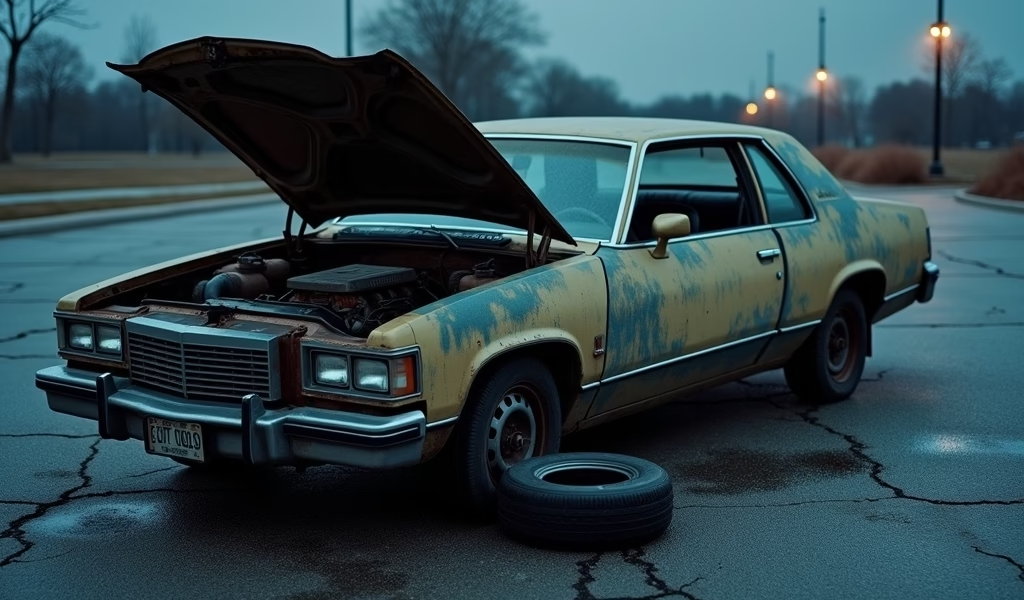Overview
The article outlines seven essential maintenance practices to extend the life of used vehicles: regular fluid checks, proper tire care, gentle driving habits, preventive maintenance scheduling, battery/electrical system upkeep, suspension maintenance, and interior protection. These consistent care strategies can help any reasonably well-built used car deliver 200,000+ miles of service, transforming what many consider a depreciating asset into a long-term transportation solution that saves thousands in replacement costs.
Reliable Used Cars: 7 Proven Care Tips to Extend Vehicle Life
When it comes to reliable used cars, what you do after the purchase matters just as much as what you buy. After spending 25 years under the hood fixing everything from stubborn transmissions to mysterious engine knocks, I’ve seen firsthand how simple maintenance routines can transform an average used vehicle into one that delivers exceptional longevity. The difference between a used car that lasts 3 years versus 10+ years often comes down to consistent, thoughtful care—not luck or even the vehicle’s original build quality.
Many drivers believe that buying a reliable used car is enough, but the truth is that any vehicle, regardless of its reliability reputation, requires proper attention to truly go the distance. Let’s explore proven strategies that have helped my customers extend their used vehicles’ lifespans well beyond the average, saving thousands in premature replacement costs.
Table of Contents
- Why Maintenance Matters More for Used Cars
- 1. Regular Fluid Checks and Changes: The Lifeblood of Reliability
- 2. Tire Care and Rotation: Foundation of Vehicle Health
- 3. Adjusting Driving Habits: Gentle Acceleration Pays Off
- 4. Preventive Maintenance Schedule: Stay Ahead of Problems
- 5. Battery Care and Electrical System Maintenance
- 6. Suspension and Alignment: The Forgotten Maintenance
- 7. Interior Protection and Cleanliness: Beyond Aesthetics
- Conclusion: The Long-Term Value of Proper Used Car Care
- Frequently Asked Questions
Why Maintenance Matters More for Used Cars
Used vehicles have already weathered some of life’s storms. They’ve experienced various driving conditions, maintenance schedules (or lack thereof), and perhaps even different climate zones. This previous history makes consistent care even more crucial for reliable used cars than for their newer counterparts.
According to Consumer Reports research, vehicles properly maintained can reliably reach 200,000+ miles—that’s nearly double what many drivers expect from their cars. When you purchase a quality used vehicle, you’re making an investment that can either depreciate rapidly or provide years of dependable service, depending largely on your maintenance approach.
The financial implications are significant. Consider this: replacing a timing belt at the recommended interval might cost $500-800, but neglecting this maintenance can lead to catastrophic engine failure with repair bills exceeding $3,000. This pattern repeats across virtually all vehicle systems—small, regular investments prevent massive, budget-breaking repairs.
Let’s dive into the seven proven care strategies that keep reliable used cars running smoothly for the long haul.
1. Regular Fluid Checks and Changes: The Lifeblood of Reliability
If there’s one area where I see used car owners consistently underperform, it’s fluid maintenance. Your vehicle relies on six critical fluids, each with its own maintenance needs:
- Engine oil: The most recognized but often stretched beyond safe intervals
- Transmission fluid: Frequently overlooked until shifting problems emerge
- Coolant/antifreeze: Crucial for preventing overheating and corrosion
- Brake fluid: Hygroscopic (absorbs moisture) and needs regular replacement
- Power steering fluid: Often neglected until steering becomes difficult
- Windshield washer fluid: Simple but essential for visibility and safety
With used cars, I recommend checking all fluid levels every two weeks during the first few months of ownership. This frequent monitoring accomplishes two things: you establish baseline consumption patterns and catch potential leaks or problems early.
For engine oil specifically, don’t blindly follow the 3,000-mile change interval that’s often quoted. Modern oils and engines can sometimes go 5,000-7,500 miles between changes. However, with used vehicles, I suggest erring on the conservative side initially. After establishing baseline oil consumption and engine health, you can potentially extend intervals based on manufacturer recommendations.
Transmission fluid deserves special attention in reliable used cars. Many transmission failures I’ve repaired could have been prevented with timely fluid changes. Unlike engine oil, transmission fluid degradation isn’t always obvious to drivers until damage occurs. For automatic transmissions, change intervals typically range from 30,000-60,000 miles, but with a used vehicle of unknown history, I recommend an immediate change after purchase unless documented proof of recent service exists.
Coolant requires special mention too. Beyond preventing freezing and boiling, it contains crucial corrosion inhibitors that protect your engine’s internal components. These inhibitors deplete over time, making regular coolant replacement (typically every 2-5 years) essential for long-term engine protection.

2. Tire Care and Rotation: Foundation of Vehicle Health
Tires represent your vehicle’s only contact with the road, yet they’re frequently neglected until visibly worn. With used cars, proper tire maintenance offers both safety benefits and significant cost savings over time.
Start with pressure checks every two weeks. Temperature fluctuations can cause pressure changes of 1-2 PSI for every 10°F difference, meaning seasonal variations significantly impact tire performance. Underinflated tires not only wear faster but also reduce fuel economy by up to 3% according to Department of Energy studies.
Rotation schedules matter tremendously for reliable used cars. Front tires typically wear differently than rear tires, especially in front-wheel-drive vehicles where the front tires handle both driving force and steering. By rotating every 5,000-7,000 miles, you’ll extend tire life by promoting more even wear patterns.
Also critical is alignment checking. Many used vehicles have experienced minor impacts or curb strikes that throw off wheel alignment. Signs of alignment issues include uneven tire wear, pulling to one side, or a steering wheel that’s off-center when driving straight. Rather than waiting for these symptoms, I advise getting alignment checked annually or after hitting significant road hazards.
One often overlooked aspect of tire care is age assessment. Rubber compounds degrade over time regardless of tread depth. Most tire manufacturers recommend replacement after 6-10 years even if tread appears adequate. Check the DOT code on your tire sidewall—the last four digits indicate manufacture date (week/year). If your used car has original tires approaching this age range, consider replacement regardless of appearance.
3. Adjusting Driving Habits: Gentle Acceleration Pays Off
Your driving style significantly impacts the longevity of reliable used cars. I’ve serviced identical vehicle models with vastly different wear patterns based solely on how their owners drove them. The good news? Modifying a few driving habits costs nothing yet yields substantial reliability benefits.
Cold start behavior is particularly crucial. Modern engines reach operating temperature faster than older models, but they still benefit from a brief warm-up period (30-60 seconds) before driving. More importantly, avoid high RPM driving until the engine reaches normal operating temperature—typically 5-10 minutes of gentle driving. This gives oil time to properly circulate and warm, providing optimal protection.
Acceleration habits matter tremendously. Abrupt, aggressive acceleration strains transmissions, engine mounts, and suspension components. I can often tell a vehicle’s driving history just by examining transmission fluid or engine mount condition. Gradual acceleration not only extends component life but also improves fuel economy.
Braking technique similarly impacts vehicle longevity. Anticipating stops and braking gradually reduces wear on brake components, suspension parts, and even tires. The difference between replacement intervals for drivers who brake smoothly versus those who brake abruptly can be thousands of miles of service life.
Highway driving versus city conditions also affects reliability. While conventional wisdom suggests highway miles are “easier” on vehicles, the reality is more nuanced. Consistent highway driving at moderate speeds is indeed gentler on many components, but excessive speeds create heat and stress that accelerate wear. For reliable used cars, a mix of driving conditions with moderate speeds maximizes longevity.
4. Preventive Maintenance Schedule: Stay Ahead of Problems
The difference between reactive and preventive maintenance approaches often determines whether a used car delivers 100,000+ trouble-free miles or becomes a series of repair headaches. Creating and following a comprehensive maintenance schedule represents your best defense against unexpected breakdowns.
When you acquire a used vehicle, start by obtaining its complete service history if possible. Then, locate the manufacturer’s maintenance schedule in the owner’s manual or online. This becomes your baseline, but with used cars, I recommend a more conservative approach—particularly for vehicles with incomplete service records.
Timing belt replacement deserves special mention for interference engines (where valves and pistons can collide if the belt fails). Missing this critical service can result in catastrophic engine damage. Most timing belts require replacement between 60,000-100,000 miles. If your used car’s history doesn’t clearly document this service and the mileage is approaching the interval, prioritize this replacement—even if the belt looks fine visually.
For used car reliability, I recommend creating a personalized maintenance calendar that includes:
- Monthly checks: Fluid levels, tire pressure, exterior lights
- Quarterly inspections: Belts, hoses, battery terminals, air filter
- Bi-annual services: Comprehensive inspections, rotation/balance of tires
- Annual maintenance: Brake inspection, suspension check, alignment verification
- Mileage-based services: Timing belt, water pump, transmission service
Digital maintenance tracking tools help enforce this schedule. Many free apps allow you to input your specific vehicle and receive customized maintenance reminders. These tools prove invaluable for used car owners by preventing oversight of critical services.
The financial advantage of preventive maintenance is compelling. A typical comprehensive inspection costs $100-150 but frequently identifies issues before they cascade into $1,000+ repairs. This approach transforms maintenance from a series of unpredictable expenses into manageable, budgetable costs.

5. Battery Care and Electrical System Maintenance
Electrical systems represent an increasingly common failure point in modern vehicles. With used cars, proactive electrical system maintenance prevents both minor inconveniences and major reliability issues.
Battery maintenance forms the foundation of electrical system reliability. Most drivers wait until a battery fails before replacement, but this reactive approach often leaves you stranded at inconvenient times. Instead, have your battery load-tested annually once it reaches three years of age. This test, available at most auto parts stores for free, measures the battery’s ability to hold charge under load—a much more reliable indicator than voltage readings alone.
Physical battery maintenance matters too. Corrosion at terminals creates resistance that stresses your charging system and can prevent proper engine starting. I recommend inspecting terminals monthly and cleaning them with a baking soda solution at the first sign of buildup. Apply terminal protectant afterward to slow future corrosion.
For reliable used cars, alternator health deserves attention too. The alternator recharges your battery and powers electrical systems while driving. Warning signs of alternator problems include dimming headlights during idling, a battery warning light that flickers, or electrical accessories operating at reduced performance. Most alternators last 100,000-150,000 miles, making them a component to monitor carefully in higher-mileage used vehicles.
Starter motors typically provide warning before complete failure. If you notice extended cranking time before the engine starts, unusual grinding noises during starting, or intermittent starting failures, have your starter tested promptly. Replacing a weakening starter before you’re left stranded represents smart preventive maintenance.
With increasing computerization in modern vehicles, fuse and electrical connection integrity matters more than ever. I recommend learning your vehicle’s fuse box locations and keeping spare fuses in common amperage ratings. Additionally, having electrical connections cleaned and protected during major services helps prevent the mysterious intermittent electrical gremlins that plague many older vehicles.
6. Suspension and Alignment: The Forgotten Maintenance
Suspension components quietly determine both your safety and comfort, yet they receive far less attention than engines or transmissions. For reliable used cars, proactive suspension maintenance prevents accelerated tire wear, improves handling safety, and protects other vehicle systems from excessive vibration.
Start by understanding your specific suspension type. Different designs (MacPherson strut, double wishbone, torsion beam, etc.) have different wear patterns and maintenance needs. Generally, components requiring periodic inspection include:
- Shock absorbers/struts: Should be inspected every 50,000 miles or when ride quality degrades
- Control arm bushings: Rubber components that deteriorate with age and mileage
- Ball joints: Critical pivot points that can affect steering control if worn
- Tie rod ends: Connect steering components and affect alignment when worn
- Sway bar links: Reduce body roll during cornering but wear over time
The “bounce test” provides a simple preliminary assessment of shock absorber health. Push down firmly on each corner of your vehicle, then release. The car should return to position and settle without continued bouncing. Excessive bouncing indicates worn shock absorbers that warrant replacement.
Alignment specifications matter tremendously for tire wear and handling predictability. I recommend alignment checks annually, after significant impacts (like hitting potholes), and whenever tire wear patterns appear unusual. Proper alignment not only extends tire life but also improves fuel economy by reducing rolling resistance.
Many suspension components benefit from periodic lubrication. Vehicles equipped with grease fittings (typically on ball joints and tie rod ends) should receive chassis lubrication during oil changes. This simple service, often overlooked in modern maintenance routines, can double the lifespan of these components.
Listen for suspension warnings during everyday driving. Clunks when traversing bumps, excessive body lean during cornering, or steering wheel vibrations all indicate potential suspension issues that should be addressed promptly before they affect other components.
7. Interior Protection and Cleanliness: Beyond Aesthetics
While interior maintenance might seem purely cosmetic, it significantly impacts both resale value and your ownership experience with reliable used cars. Beyond appearances, interior care preserves functional components that affect daily usability.
Sun exposure represents one of the most damaging elements for vehicle interiors. UV radiation degrades dashboards, causing cracks and warping over time. Using a windshield sunshade when parking outdoors and applying UV protectant to interior surfaces every 3-4 months dramatically extends interior life. For long-term car value, this simple habit pays dividends.
Seat maintenance deserves special attention, particularly with leather upholstery. Leather requires periodic cleaning and conditioning to prevent drying, cracking, and premature wear. For cloth seats, prompt stain treatment and periodic deep cleaning prevent permanent discoloration. Both types benefit from seat covers in vehicles that see heavy use or frequently transport children.
Electronics protection matters increasingly in modern vehicles. Touchscreens, control panels, and infotainment systems all benefit from gentle, appropriate cleaning. I recommend electronics-specific cleaning wipes rather than all-purpose cleaners that may damage sensitive components. Pay attention to buttons and knobs that see frequent use—these interaction points often fail first when dirt accumulates around their mechanisms.
Carpet and floor protection significantly impacts both appearance and underlying structural integrity. Floor mats should be removed and cleaned monthly, with the underlying carpet vacuumed to prevent abrasive dirt accumulation. In regions experiencing snow and road salt, frequent interior cleaning during winter months prevents corrosion that can eventually penetrate the floor pan.
Air quality maintenance often gets overlooked but affects both comfort and system longevity. Replace cabin air filters at recommended intervals (typically 15,000-30,000 miles) to maintain proper HVAC airflow and prevent blower motor strain. Additionally, running the air conditioning weekly, even in winter, keeps seals lubricated and prevents refrigerant leaks.
Conclusion: The Long-Term Value of Proper Used Car Care
Maintaining reliable used cars represents both an art and science. Throughout my decades in the garage, I’ve watched drivers who followed these seven principles consistently extract 200,000+ miles from vehicles that others might have scrapped at half that mileage. The difference comes down to consistency, preventive thinking, and treating maintenance as an investment rather than an expense.
The financial mathematics proves compelling. A properly maintained used vehicle might require $800-1,200 annually in routine maintenance and minor repairs. This might seem significant until compared with new car payments easily exceeding $5,000-7,000 yearly, plus higher insurance costs and steeper depreciation.
Beyond economics, there’s a satisfaction in maximizing a vehicle’s potential lifespan—reducing waste and resource consumption while enjoying reliable transportation. The used car that receives thoughtful care isn’t just economical; it’s environmentally responsible too.
Remember that manufacturer reputation for reliability merely establishes potential. Whether your used vehicle realizes that potential depends largely on the care it receives under your ownership. With these seven principles applied consistently, almost any reasonably well-built used car can deliver exceptional service life, turning what many consider a depreciation liability into a long-term transportation asset.
Frequently Asked Questions
How often should I change the oil in my used car?
For most used cars, changing oil every 5,000 miles provides good protection. Consider more frequent 3,000-mile intervals for vehicles with high mileage or those subjected to severe driving conditions.
What’s the most important maintenance for extending a used car’s life?
Regular fluid maintenance—particularly oil, transmission fluid, and coolant—delivers the biggest reliability impact. These fluids provide critical protection to expensive mechanical components.
Is it worth fixing a used car with high mileage?
Absolutely, provided the vehicle has a good maintenance history and the repair costs less than half the vehicle’s value. Many vehicles can reliably exceed 200,000 miles with proper care.
How do I know if a used car has been well-maintained?
Look for complete service records, consistent oil change stickers, and evidence of preventive maintenance like timing belt replacement. A comprehensive pre-purchase inspection by a trusted mechanic also reveals maintenance history clues.
Can I skip scheduled maintenance to save money on my used car?
Skipping maintenance typically costs substantially more in the long run. Deferred maintenance often leads to component failures requiring repairs costing 3-5 times the maintenance that would have prevented them.

